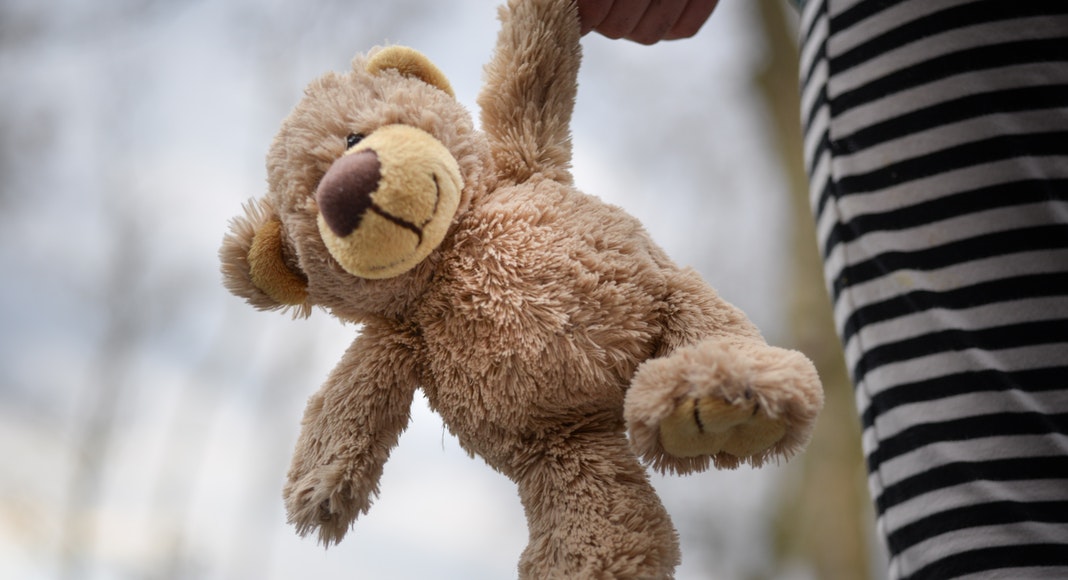 My youngest daughter is a “lovey” kid. If you have one, you know what I mean: the child who forms an early, seemingly random yet unwavering attachment to a toy or object that becomes an indispensable member of the family. If you haven’t turned the car around an hour into a trip to retrieve a forgotten stuffed animal, or bribed your child with a full-size candy bar in order to put a horribly ragged and discolored blankie through the wash, you probably don’t feel my pain.
My youngest daughter is a “lovey” kid. If you have one, you know what I mean: the child who forms an early, seemingly random yet unwavering attachment to a toy or object that becomes an indispensable member of the family. If you haven’t turned the car around an hour into a trip to retrieve a forgotten stuffed animal, or bribed your child with a full-size candy bar in order to put a horribly ragged and discolored blankie through the wash, you probably don’t feel my pain.
For my 2-year-old daughter, the lovey of her life is Bunnoo, a small plush bunny that used to be white and used to have paws that didn’t look like they’d narrowly survived a trip through the paper shredder. I was amused and touched by her instant bond with Bunnoo as a young infant, but I never really questioned what it might mean until a few months ago. My most physically affectionate child and “mommy’s little shadow,” I figured she just liked having something to snuggle when I wasn’t within reach.
But recently the relationship with Bunnoo has grown more complex. It is still far and away her most prized possession (no sleep—for any of us—takes place without it), but it is frequently the object of her frustration and experimentation in addition to affection. It’s not uncommon to see Bunnoo flying across the room when our daughter hears something that displeases her (usually, “No more snack”), and she has begun to intentionally leave the toy in obscure locations around the house before bedtime, knowing she will suffer more than anyone else if it can’t be found.
I started wondering what was going on and trying to figure out what the toy represents to my daughter: something fiercely loved and irreplaceable, but also something that absorbs her anger and keeps reappearing when she really needs it. Then I realized, it’s not what Bunnoo represents; it’s who. I’m pretty certain that graying, worn-out, seen-better-days lovey is me.
I turned to the Internet to further research this theory of mine, and I found some well-established backing in child psychology. In his 1971 book, Playing and Reality, British pediatrician and psychoanalyst Donald Winnicott wrote about so-called “transitional objects” during infancy that are real items but also symbolic stand-ins (most often, Winnicott believed, for the mother or the breast, “the object of the first relationship”). The transitional object, he wrote, “must survive instinctual loving, and also hating and, if it be a feature, pure aggression.” That’s a check mark by all three here at our house.
Winnicott theorized that for many children, transitional objects are a healthy part of emotional development, and also a defense against separation anxiety. For my daughter, there also seems to be an element of testing: what happens if I let out all my feelings? Will the relationship (with Bunnoo or a living loved one like her mom) change? If we’re separated, will that be permanent? By observing her interactions with her lovey, I may be able to understand more about my daughter’s moods and fears than she can express in words at this age.
So as long as Bunnoo remains a VIP in our household, I will continue to try my best to make sure it doesn’t get left behind at the park and gets washed at least semi-regularly. I’ll also try to remember that Bunnoo is a source of comfort and reassurance in my daughter’s often confusing world, but not the main source. That is my job, and will be long after the lovey stage is over.





















